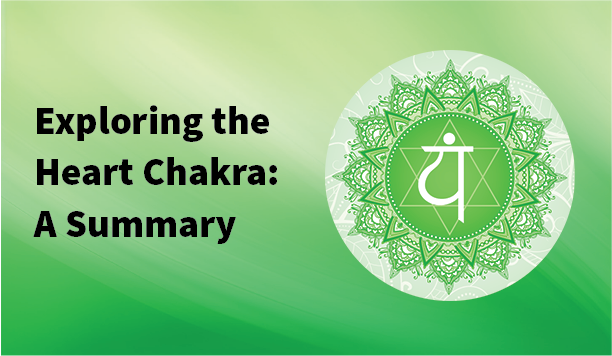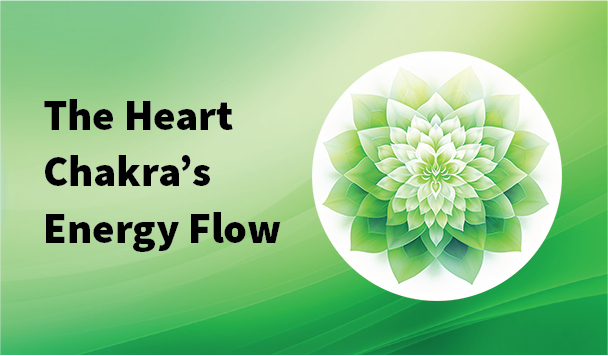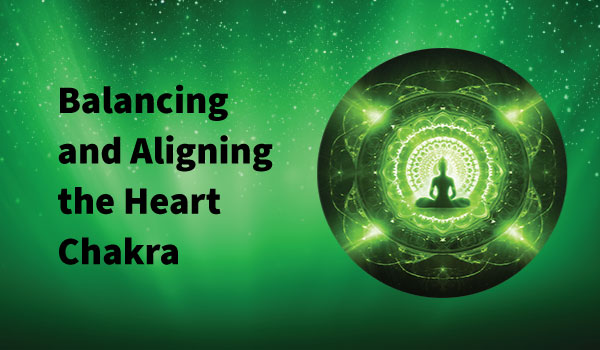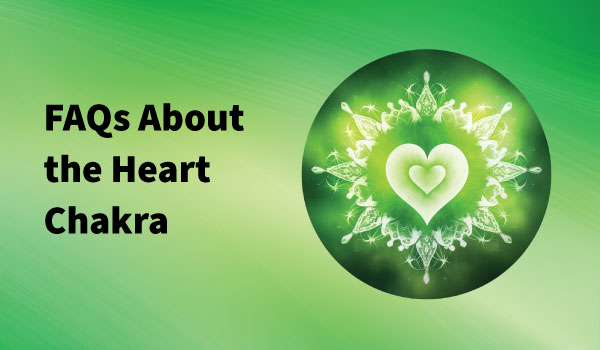Heart Chakra Meaning – Embracing Your Healing Powers
Nestled in the center of this chakra system, the Heart Chakra, or Anahata, holds a special place. Its location is specifically in the chest area, near the heart, and it is often associated with the colors green and pink. The name Anahata carries profound meaning, translating to “unstruck” or “unhurt.” This name underscores the heart chakra’s role as a center for love, compassion, and healing. Join us as we take a deep dive into defining heart chakra meaning.
The chakra system is an ancient and intricate framework deeply rooted in Eastern spiritual and holistic traditions, particularly Hinduism and Buddhism. These traditions believe in the existence of a subtle energy system within the human body, comprising seven primary chakras. “Chakra” is a Sanskrit word that translates to “wheel” or “disc,” symbolizing the spinning energy centers that influence various aspects of our physical, mental, and emotional well-being.
The Heart Chakra acts as a bridge between the lower chakras, which deal with earthly and material concerns, and the higher chakras, which explore spiritual and cosmic dimensions. This pivotal position makes the heart chakra a key player in the intricate energy dance that occurs within our being.

Understanding and nurturing the heart chakra is not just a matter of esoteric interest; it holds immense significance for our overall well-being. When the heart chakra is in balance and alignment, individuals often experience profound emotional harmony, an enhanced sense of self-love, and a deep inner peace. Moreover, the balanced heart chakra facilitates healthy and fulfilling relationships, fostering empathy and compassion for oneself and others.
Conversely, an imbalanced heart chakra can manifest as emotional turmoil, difficulties in forming meaningful connections, and even physical health issues. In a broader sense, the heart chakra’s state significantly influences our interactions with the external world. By nurturing and balancing this chakra, individuals become more attuned to empathy, understanding, and interconnectedness with the collective consciousness, promoting a sense of unity and harmony with the world around them.
In the subsequent sections of this article, we will embark on a journey to explore the heart chakra in greater depth. We will delve into its intricate characteristics, energy flow dynamics, effective methods for achieving balance and alignment, and address the common questions and concerns that often arise on the path of heart chakra healing.
Heart Chakra Symbols, Color, and Associations
The heart chakra, Anahata, is situated in the center of the chest, just above the heart and below the collarbone. Its precise location corresponds to the cardiac plexus. The color associated with this chakra is primarily green, symbolizing growth, renewal, and balance. In some interpretations, a secondary color, pink, is also linked to the heart chakra, representing unconditional love and compassion.
Anahata is often depicted as a lotus flower with twelve petals. Each petal is associated with qualities like love, compassion, empathy, acceptance, and forgiveness. The lotus is a symbol of purity, enlightenment, and spiritual unfoldment. The central part of the lotus contains a six-pointed star, representing the union of opposites and the harmonious balance achieved when the heart chakra is in equilibrium.
Emotional and Psychological Associations
The heart chakra governs a range of emotions and psychological attributes. It is the epicenter of love, not just romantic love, but also love for oneself, family, friends, and all living beings. Compassion, empathy, and forgiveness are other key emotional qualities associated with the heart chakra. When balanced, this chakra fosters a sense of emotional stability, inner peace, and the ability to give and receive love freely.
Physical Associations
Physically, the heart chakra is connected to the heart, lungs, thymus gland, and circulatory system. It influences the functioning of these vital organs and systems. An imbalanced heart chakra may manifest as respiratory issues, heart problems, or immune system disorders. Conversely, a harmonious heart chakra can contribute to overall physical health and well-being.
Role in the Chakra System
Within the chakra system, the heart chakra serves as a central pivot point. It bridges the lower chakras (Root, Sacral, and Solar Plexus) associated with material and earthly matters, and the higher chakras (Throat, Third Eye, and Crown) linked to spiritual and cosmic dimensions. This intermediary role highlights the heart chakra’s significance in balancing our earthly existence with our spiritual aspirations.
Understanding the heart chakra’s location, color, symbolism, emotional and psychological associations, as well as its impact on physical health and its pivotal role in the chakra system, provides a comprehensive foundation for exploring how to balance and align this vital energy center. In the following sections, we will delve deeper into the practical aspects of nurturing and harmonizing the heart chakra for a more balanced and fulfilling life.

The heart chakra, Anahata, is often described as the center of our emotional and energetic universe. To comprehend its significance, we must delve into the concept of energy flow within this chakra.
At its core, the heart chakra is a vortex of swirling energy, constantly in motion. It serves as a bridge between the lower chakras (Root, Sacral, and Solar Plexus) that are primarily concerned with material and earthly matters and the higher chakras (Throat, Third Eye, and Crown) that explore the spiritual and cosmic dimensions. This central position grants the heart chakra a unique role in balancing our earthly existence with our spiritual aspirations.
The energy flow within the heart chakra is influenced by our thoughts, emotions, and actions. When we experience love, compassion, and forgiveness, the heart chakra vibrates at a higher frequency, allowing energy to flow freely and harmoniously. Conversely, negative emotions such as anger, resentment, or fear can disrupt this flow, leading to an imbalanced heart chakra.
An open and balanced heart chakra facilitates the exchange of energy with the external world, promoting emotional stability, empathy, and the ability to give and receive love. It serves as the conduit through which we connect with others on an emotional level, fostering harmonious relationships and a profound sense of interconnectedness.
Signs of an Imbalanced Heart Chakra
Recognizing the signs of an imbalanced heart chakra is essential for addressing any issues that may arise. Some common indicators include:
Difficulty in Trusting: An imbalanced heart chakra can result in an inability to trust others fully. This may manifest as suspicion, doubt, or fear of betrayal.
Jealousy and Insecurity: Feelings of jealousy, insecurity, or unworthiness can stem from an imbalanced heart chakra. These emotions hinder the capacity to give and receive love openly.
Resentment and Grudges: Holding onto grudges and nursing resentment can be a sign of an imbalanced heart chakra. Forgiveness and letting go become challenging when this energy center is not functioning optimally.
Isolation: People with an imbalanced heart chakra may withdraw from social interactions or isolate themselves emotionally, fearing vulnerability.
Physical Symptoms: Physical manifestations of an imbalanced heart chakra can include heart palpitations, chest tightness, respiratory issues, and high blood pressure. These symptoms underscore the intricate mind-body connection.
Benefits of a Balanced Heart Chakra
Balancing and harmonizing the heart chakra brings forth numerous benefits that significantly impact our well-being:
Emotional Harmony: A balanced heart chakra fosters emotional stability and resilience. It allows individuals to navigate life’s challenges with grace and composure.
Love and Compassion: An open heart chakra enables the experience and expression of love and compassion. This extends not only to others but also to oneself.
Healthy Relationships: Relationships become more fulfilling and harmonious when the heart chakra is balanced. The ability to empathize, forgive, and connect deeply with others is enhanced.
Inner Peace: Achieving inner peace is a hallmark of a balanced heart chakra. It promotes a sense of calm, even amidst life’s turmoil.
Interconnectedness: A balanced heart chakra reminds us of our interconnectedness with all living beings and the universe, fostering a sense of unity and harmony in the world.
Understanding the dynamics of energy flow within the heart chakra, recognizing signs of imbalance, and appreciating the myriad benefits of a balanced heart chakra form the foundation for effective healing and alignment. In the following sections, we will explore practical techniques and approaches to balance and align this vital energy center, allowing individuals to unlock their full emotional and spiritual potential.

Meditation and Visualization Techniques for Solar Chakra Healing
Meditation serves as a powerful tool for balancing and aligning the heart chakra. Through meditation, individuals can explore the inner landscape of their emotions and thoughts, promoting self-awareness and emotional healing. Specific visualization techniques can be particularly effective:
Green and Pink Light Visualization: During meditation, close your eyes and focus on your heart center. Imagine a radiant green or pink light glowing in this area. As you breathe deeply, visualize this light expanding with each inhale and radiating love and compassion with each exhale. This visualization can help clear energetic blockages and promote balance in the heart chakra.
Loving-Kindness Meditation: Also known as Metta meditation, this practice involves directing thoughts of love and well-wishing towards oneself, loved ones, acquaintances, and even those you may have conflicts with. By cultivating feelings of love and compassion, the heart chakra is nurtured and opened.
Yoga Poses and Exercises
Yoga offers a physical and energetic approach to heart chakra healing. Specific yoga poses and exercises can help open and balance this energy center:
Camel Pose (Ustrasana): This heart-opening pose stretches the chest and throat, promoting an open heart chakra. It encourages vulnerability and receptivity, allowing for the release of pent-up emotions.
Bridge Pose (Setu Bandhasana): Bridge pose not only strengthens the back and core but also opens the chest, promoting flexibility and energy flow in the heart chakra.
Pranayama (Breath Control): Breathwork techniques, such as deep diaphragmatic breathing and alternate nostril breathing (Nadi Shodhana), can help regulate the flow of prana (life force energy) through the heart chakra, promoting balance and relaxation.
Crystals and Gemstones for Heart Chakra Healing
Crystals and gemstones have unique vibrational frequencies that can support heart chakra healing:
Rose Quartz: Known as the “stone of unconditional love,” rose quartz emits a gentle and nurturing energy that encourages self-love and compassion.
Green Aventurine: This green stone is associated with abundance and opportunity. It is often used to release old patterns and emotional blockages in the heart chakra.
Emerald: Symbolizing renewal and growth, emerald can help individuals connect with the heart’s wisdom and align their intentions with love and compassion.
To use these crystals for heart chakra healing, place them over your heart during meditation or wear them as jewelry close to your chest.
Aromatherapy and Essential Oils
Aromatherapy can be a soothing and supportive practice for heart chakra healing. Essential oils such as rose, lavender, and jasmine are known for their heart-opening properties. You can:
Diffuse Oils: Use an essential oil diffuser to disperse the aroma of heart-chakra-friendly oils into your environment.
Topical Application: Dilute essential oils in a carrier oil and apply them to your chest, neck, or wrists during meditation or throughout the day for a calming effect.
Affirmations and Mantras
Positive affirmations and mantras can reprogram the mind and encourage heart chakra balance:
Affirmations: Repeat affirmations like “I am open to giving and receiving love,” “I forgive myself and others,” or “I am worthy of love and compassion” to cultivate a loving and open heart.
Mantras: The traditional Sanskrit mantra for the heart chakra is “Yam” (pronounced “yum”). Chanting this mantra during meditation or as part of your daily practice can resonate with and stimulate the heart chakra.
Dietary and Lifestyle Considerations
Dietary choices and lifestyle practices can also support heart chakra healing:
Nutrition: Consume foods rich in green and pink colors, such as leafy greens, broccoli, spinach, and berries. These colors are associated with the heart chakra and can help energize it.
Self-Care: Engage in self-care practices that nurture your emotional well-being. This can include journaling, spending time in nature, engaging in creative activities, and seeking therapy or counseling when needed.
Forgiveness: Practice forgiveness, both for yourself and others. Holding onto grudges and resentments can create blockages in the heart chakra, hindering its ability to flow freely.
By incorporating these techniques and practices into your daily life, you can work towards balancing and aligning your heart chakra, fostering a deeper sense of love, compassion, and emotional well-being in your life.

Popular Questions and Answers About Learning Heart Chakra Meaning
Q:How can I tell if my heart chakra is open and balanced?
A: You’ll likely experience a sense of inner peace, emotional stability, and the ability to love and show compassion for oneself and others.
Healthy relationships, harmonious interactions, and an enhanced sense of empathy and forgiveness are signs of a balanced heart chakra.
Q: Can an imbalanced heart chakra affect my physical health?
A: Yes, an imbalanced heart chakra can lead to physical health issues, including heart and respiratory problems, high blood pressure, and immune system disorders.
Q: What role does self-love play in heart chakra healing?
A: Self-love is integral to heart chakra healing. It forms the foundation for loving and connecting with others and promotes emotional well-being.
Q: Are there any potential risks associated with heart chakra work?
A: While heart chakra work is generally safe, it’s essential to approach it with mindfulness. Deep emotional releases can occur, so seeking guidance from a qualified practitioner is advisable if needed.
Q: How long does it take to balance the heart chakra?
A: The timeline for balancing the heart chakra varies from person to person. Consistent practice of heart-centered techniques and self-care is essential, and progress may occur gradually over time.
Real-life Applications of Solar Chakra Work
Morning affirmations: Start your day with positive affirmations related to personal power and confidence. Repeating these affirmations can set a confident and empowered tone for the day ahead.
Visualization exercises: Spend a few minutes each morning visualizing a radiant yellow light at your Solar Chakra, reinforcing your self-assurance.
Healthy dietary choices: Incorporate foods that support the Solar Chakra, such as yellow fruits and vegetables, into your meals.
Mindful decision-making: Practice making decisions mindfully, considering your own desires and goals rather than succumbing to external pressures.
Yoga practice: Include Solar Chakra-balancing yoga poses in your regular yoga routine.
Lets Wrap This Up
In conclusion, the journey through the heart chakra is a path to profound emotional healing, self-discovery, and spiritual growth. By exploring and nurturing this pivotal energy center, we can unlock a wellspring of love, compassion, and unity within ourselves and with the world around us.
The heart chakra, Anahata, holds a unique position within the chakra system, serving as a bridge between the physical and spiritual realms. Its location at the center of the chest, represented by the colors green and pink, signifies its role in promoting love, compassion, and healing. Understanding the heart chakra’s intricacies, both in terms of its location and its emotional and psychological attributes, provides a solid foundation for embarking on a transformative journey of self-discovery.
The heart chakra invites us to embark on a personal odyssey. It encourages us to explore the depths of our emotions, embrace our vulnerabilities, and heal old wounds. By doing so, we can open ourselves up to a world of love, connection, and emotional well-being. This journey is not only about the self; it is also about fostering a sense of empathy, compassion, and unity with the collective consciousness.
It is essential to remember that the heart chakra is not a destination but a continuous journey. Balancing and aligning this energy center is an ongoing process, and it requires patience, self-compassion, and dedication. Each step taken towards nurturing the heart chakra brings us closer to living a life filled with love, harmony, and emotional balance.
Final Thoughts on Achieving Emotional and Spiritual Harmony Through Heart Chakra Healing
Heart chakra healing is not just about personal growth; it has the potential to transform the way we interact with the world. As we heal and balance our heart chakra, we become beacons of love and compassion, radiating these qualities to those around us. Our relationships flourish, and our connection with the universe deepens.
In a world often marked by division and conflict, the heart chakra serves as a reminder that, at our core, we are all connected by a shared humanity. By nurturing this energy center, we can contribute to a more compassionate and harmonious world.
We Do Chakra Rebalancing
Learn more about each chakra:

SHARE
Author: Editorial Staff
Expertise: Chakra Balancing – Remote and Distance Treatments – Sound and Frequency Meditations – Meditation Practices – Shakti Healing Treatments – Reiki Treatments – Spirituality – Heart Chakra Meaning
Highlights:
- A combined 40 years of experience and practice in meditation and energy healing therapies
- We offer unique and novel sound meditation sessions for public and private groups
- A sincere passion for the topics we cover and write about.
